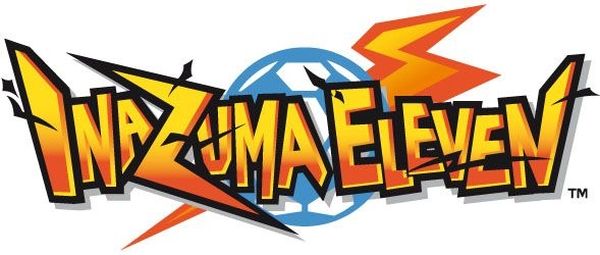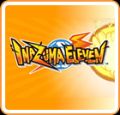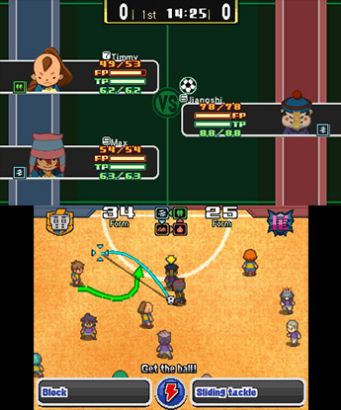
I’ll just say it up front: Inazuma Eleven is really weird. It’s an RPG set in the world of high school soccer that plays as both a role-playing game and a sports game at the same time. Developed and published by Level-5, who are not strangers to games that are different, Inazuma Eleven really just rolls with it… no pun intended. It was released in Japan back in 2008 on the DS, and was re-released earlier this year on 3DS, which is when it finally came to our shores. The game – which has multiple sequels and spin-offs – has also spawned a manga, anime, collectible card game, and yes, according to Wikipedia, it even “served as the debut of a J-pop idol group” called Twe’lv. So what’s the deal with this quirky game?
Platforms: 3DS
Publisher: Level-5
Developer: Level-5
Genre: SRPG (Soccer Role-Playing Game)
Release Date: February 13, 2014
ESRB Rating: Everyone 10+
 In Inazuma Eleven, you are Mark Evans, a soccer player who wants his team to be awesome. But the other members of his team aren’t as motivated as Mark is, and lollygag around most of the time. Mark is picked on by just about everyone else. When a mysterious student named Axel Blaze transfers to Mark’s school, Mark finds out he plays soccer, and does everything he can to try and recruit him.
In Inazuma Eleven, you are Mark Evans, a soccer player who wants his team to be awesome. But the other members of his team aren’t as motivated as Mark is, and lollygag around most of the time. Mark is picked on by just about everyone else. When a mysterious student named Axel Blaze transfers to Mark’s school, Mark finds out he plays soccer, and does everything he can to try and recruit him.
Besides being an RPG and a soccer simulation, Inazuma Eleven is also something of a dramatic anime as well. There are hundreds of playable characters and so many NPCs that you can interact with. Once you get through the beginning of the game and finally get to playing, you can just run around and have random encounters for hours (and hours and hours). It’s the grinding gamer’s dream come true. Recruit people to your team, check out their skills, level them up, and build the strongest team you can. It’s really strange, but oddly enticing as well.
 The battles themselves, in which you are playing soccer, can be a real pain at first, as they aren’t easy to get used to. You have to figure out which skills work the best, and make sure that you are keeping an eye on your characters and their stats (they can get worn out if you use them too much, and you have to replenish them every so often by going back to the clubhouse). While playing in a match, you use the stylus to get around enemies – you have actions you can take, or you can use your special abilities if you have points available. Once you get used to all of this, though, the game opens up even more, introducing an elemental aspect that was never mentioned before – and isn’t really all that clearly explained at first. It’s basically the same sort of idea from the Pokemon franchise, in which some types are powerful against others, but it doesn’t determine whether or not the move succeeds or not, it just gives you a higher chance to succeed. It’s confusing, but again, it’s one of those things that you can get used to pretty quickly.
The battles themselves, in which you are playing soccer, can be a real pain at first, as they aren’t easy to get used to. You have to figure out which skills work the best, and make sure that you are keeping an eye on your characters and their stats (they can get worn out if you use them too much, and you have to replenish them every so often by going back to the clubhouse). While playing in a match, you use the stylus to get around enemies – you have actions you can take, or you can use your special abilities if you have points available. Once you get used to all of this, though, the game opens up even more, introducing an elemental aspect that was never mentioned before – and isn’t really all that clearly explained at first. It’s basically the same sort of idea from the Pokemon franchise, in which some types are powerful against others, but it doesn’t determine whether or not the move succeeds or not, it just gives you a higher chance to succeed. It’s confusing, but again, it’s one of those things that you can get used to pretty quickly.
There are tons of things to keep track of in this game, from stats to skills to abilities and all the points that go with everything. You have to keep an eye on your characters, or you’ll be wondering why they can’t slide tackle successfully. So long as you stay on top of everything, and don’t get too frustrated when you fail, you’ll enjoy the game.
All of that being said, I can’t say I had a great time with Inazuma Eleven. While I found myself really interested in it once I got to know it better, it really turned me off at first. Honestly, the strangeness of it was what kept me going, and the desire to want to understand how everything worked – which I’m still not sure I completely do. The bottom line is, if you love super-complicated RPGs, and you’re looking for something to play on your 3DS, this is a game that was made for you. But if you’re easily frustrated and don’t want to spend the time to understand the game, you might want to avoid this one altogether.

Review Disclosure: A review copy of Inazuma Eleven was provided by Level-5 for the purposes of this review.







